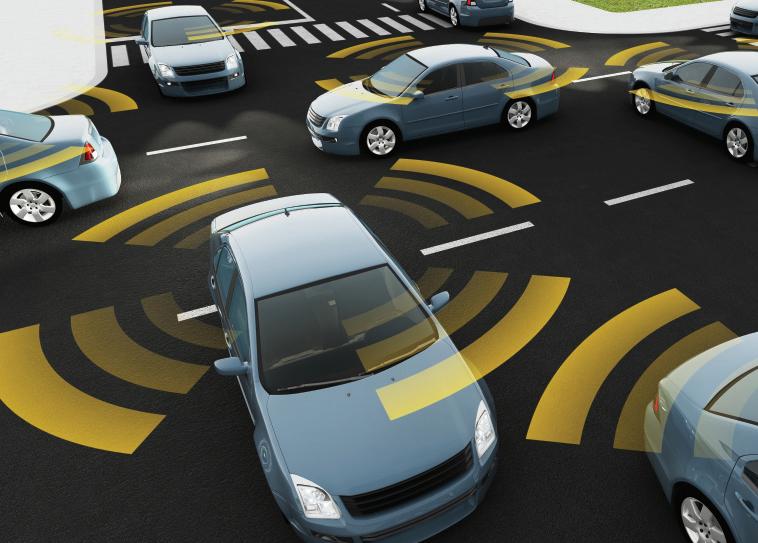

The road to zero fatalities starts with the network, not the car
For over a decade, the world has watched in awe as autonomous vehicles (AVs) evolved from science fiction to a tangible reality. Startups have promised a driverless utopia, legacy automakers have retrofitted their fleets with sensors and AI, and regulatory frameworks are beginning to take shape. Yet, despite billions invested in LiDAR arrays and neural nets, one immutable truth is becoming clear: no matter how intelligent a vehicle may be, it cannot operate safely in a vacuum. The road to zero fatalities does not begin with the car. It begins with the network.
As Tristan Wood, a veteran pioneer at the cutting edge of connected systems and the mind behind Livewire Digital’s RazorLink Smart Networking, explains here, autonomous vehicles are not self-contained AI islands. They’re nodes in a living, breathing network. When that network fails, so do they.
The term ‘autonomous vehicle’ is misleading. True autonomy, the ability to operate in any environment without human intervention, remains a mirage. Today’s AVs are, in fact, hyper-dependent entities, reliant on data intensive streams, real-time mapping, and environmental inputs from outside their own sensor suites.


Consider the recent incident in San Francisco, where multiple Cruise robotaxis became gridlocked due to insufficient wireless bandwidth during a large-scale event. The problem wasn’t faulty AI or a software bug. It was a bandwidth bottleneck, a breakdown in the digital scaffolding that supports autonomy. As complexity increases, so does the need for resilient, redundant, intelligently managed connectivity.
One way to approach this problem is by looking at other sectors and proven use cases where mobility depends on connectivity, and where communication systems must work seamlessly across environments with minimal margin for failure. The maritime industry, for example, is already relying heavily on hybrid network architectures that combine multiple layers of connectivity to ensure vessels remain in contact with navigation systems, port authorities, and real-time weather intelligence, regardless of location or atmospheric condition. These marine networks are blending satellite communications, coastal cellular connections, and long-range radio in a bonded system that prioritises resilience above all else.
HARSH AND UNPREDICTABLE ENVIRONMENTS
These architectures are not theoretical. They are being used daily now in harsh and unpredictable environments to keep ships safe, efficient, and connected. Their success in maintaining nearly continuous connectivity across oceans where there are no cell towers or roadside cabinets, illustrates that network resilience is not only possible but commercially viable. It also demonstrates that single points of failure are avoidable when systems are designed with intelligent redundancy and utilisation of different bearers.
This concept can and should be adapted for terrestrial mobility and the advent of ‘smart’ cities and highways, and steps are being taken to begin this. It reframes the question: rather than asking how to make vehicles and, one day, aerial taxis, smarter, we should be asking how to make the environment, roads and the networks they depend upon super intelligent. The answer lies in building connectivity from multiple, overlapping layers: terrestrial cellular (5G and, soon, 6G), low Earth orbit satellites for coverage in rural or obstructed regions, direct short-range
Tristan Wood, founder and CEO of Livewire Digital
Photo courtesy Shutterstock/Metamorworks
communications between vehicles and infrastructure for critical hazard warnings, and embedded IoT nodes within urban furniture that can relay and process data locally.
These layers must be orchestrated by software that can dynamically route traffic based on latency, cost, congestion, and priority. This ensures that safety-critical messages always reach their destination, regardless of what is happening in the broader network. It is not about overengineering for every eventuality but about ensuring graceful degradation in the face of disruption - a principle well understood in the aviation and maritime worlds. In other words, the ability of a system intelligently to work through or around weak spots and to maintain critical services regardless.
The transition from merely ‘connected’ cars, which primarily use data for infotainment and telematics, to truly ‘autonomous’ vehicles that depend on real-time data for mission-critical functions like navigation, hazard avoidance, and cooperative manoeuvring, represents a monumental leap in complexity and risk. The incident in San Francisco surely serves as a stark warning. The failure of a single network underlay can have cascading, system-wide consequences, eroding public trust and setting back deployment schedules by years.
For the regulators, planners, and safety authorities tasked with safeguarding our roadways, this is the central issue. The goal of ‘Vision Zero’- the complete elimination of traffic fatalities and severe injuries - is simply unachievable if the digital foundation of our future transport system is built on a fragile, single point of failure.
CONNECTED CONFIDENCE
To achieve what can be termed ‘connected confidence’, the state where regulators, operators, and the public have justifiable faith in autonomous systems, we must architect a network that is virtually infallible. This requires a paradigm shift away from reliance on any single communication bearer and toward a multi-layered, resilient hybrid network. Fortunately, this is not a theoretical concept. A powerful, real-world analogue already exists in one of the world’s most demanding operational environments: the maritime industry.
The clearest example of thinking and preparation for this brave new connected world in action is Europe’s CELTIC-NEXT euro 9.3 million SafeRoute-6G initiative. Coordinated by HITEC Luxembourg and involving 30 global partners, this three-year program is building a blueprint for a zero-fatality road network.
One key pillar of the project is crowdsourced hazard sensing, using both vehicles and infrastructure to share real-time data on road conditions. Another is the development of digital twins for cybersecurity, which simulate attacks to harden systems before deployment. A third is hybrid teleoperation, allowing remote human control when AVs encounter edge cases. The final element ensures seamless cross-border handoff, maintaining data continuity across mobile operators and national boundaries.
Crucially, SafeRoute-6G will be built on hybrid connectivity principles. As is already working on the open oceans through Inmarsat’s NexusWave, the architecture

of its terrestrial equivalent will aggregate all available network links such as 5G, satellite, Wi-Fi, into a secure, self-maintaining, unbreakable pipeline. Its target is 99.999 percent uptime and sub-100 millisecond latency, goals that reflect the demands of safety-critical operations rather than consumer-grade services.
Despite technical maturity, real deployment faces hurdles. Cybersecurity is perhaps the most pressing. A diverse network increases the attack surface. But paradoxically, it also improves resilience. If one path is compromised, intelligent routing can isolate and reroute data via an unaffected link. Regulatory fragmentation presents another challenge. The EU and US are aligning around hybrid architectures, but progress is uneven. Coordinated efforts like the US Department of Transportation’s V2X (vehicle-to-everything) Deployment Plan and the EU’s General Safety Regulation aim to harmonize.
Public trust is a further barrier, and surveys show deep scepticism about AV safety1. The solution is not PR, but proof: robust pilot programs that demonstrate real-world, data-backed safety outcomes. Finally, there is the issue of cost and return on investment. Initial outlays are significant. But the societal return on investment, including reduced fatalities, lower congestion, emissions savings, and freight efficiencies, is massive. SafeRoute-6G and US pilot data 2 show crash reductions, fuel savings, and system-wide productivity gains.
Autonomous mobility is not about building smarter machines. It is about building smarter mobile ecosystems. The car, no matter how intelligent, is only as safe as the network it relies on. The maritime sector has shown us that hybrid network models can work at scale. Terrestrial initiatives like SafeRoute-6G show us how they can be adapted for roads.
The call to action is clear. Regulators must prioritise resilient digital infrastructure. Planners must treat lampposts as much as lifelines as asphalt. And public safety leaders must understand that the road to Vision Zero is paved not just with good intentions, but with bonded, orchestrated, and fail-safe connectivity.
Until we shift our focus from the car to the network, Vision Zero will remain a vision. It’s time to build the digital roads that autonomous vehicles can truly trust.
1 https://saferoads.org/wp-content/uploads/2018/04/AVPublic-Opinion-Polls-4-26-18.pdf
2 https://theacvpilot.com/
Photo courtesy Shutterstock/Karsten Neglia

